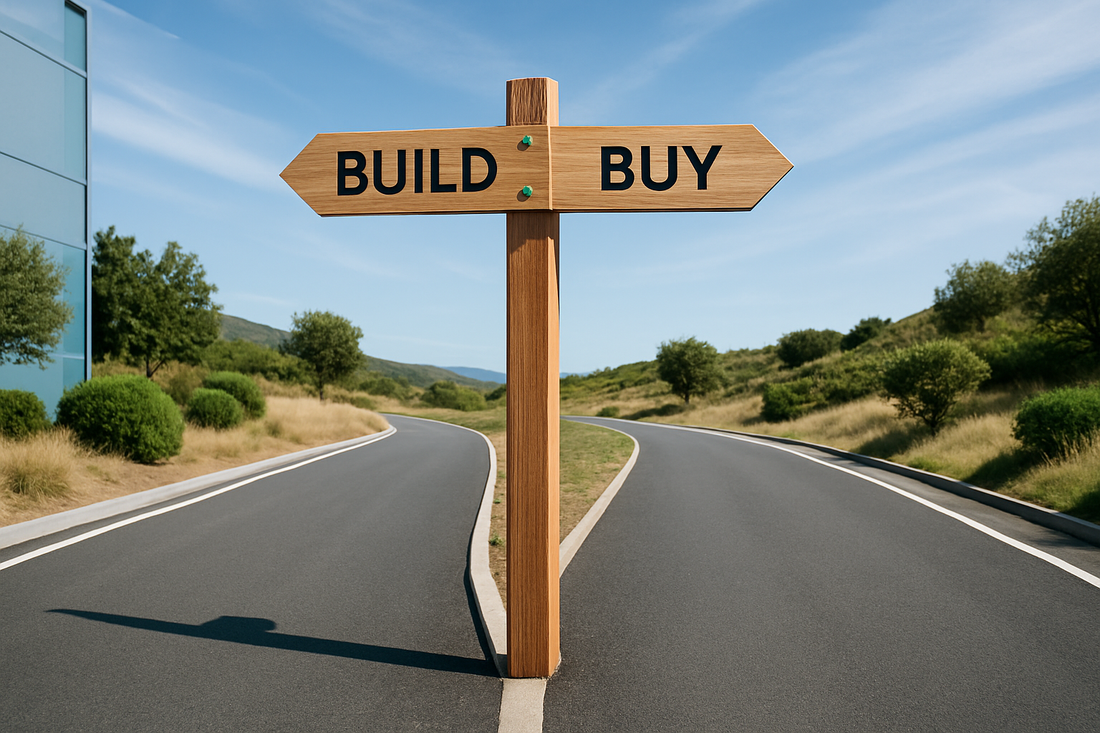
Build or Buy? Choosing the Right Tools for Your Stage of Growth
Share
Introduction
Every ecommerce seller eventually hits a crossroads. You’re growing, the tools you started with feel stretched, and you’re stuck asking the dreaded question: Should we build it ourselves or buy something off the shelf?
This decision isn’t just about tech. It’s about strategy, mindset, and knowing exactly where your business sits in its growth curve. Choose wrong, and you’re bogged down in maintenance, or worse—locked into tools that limit rather than lift your momentum.
The Build vs Buy Debate Isn’t New—But It’s Changing
Historically, large businesses built custom tools. Smaller ones bought pre-made software. But with modern APIs, composable commerce, and low-code platforms, that line’s blurrier than ever.
So how do you decide what’s right for your multi-channel business? It starts with knowing your stage.
Stage One: Early Growth (Survival Mode)
If you're just starting to scale or managing a few marketplaces like eBay, Amazon, or Etsy, your goal is simple: stay afloat and automate the basics.
What You Need:
- Off-the-shelf solutions with great support
- Low monthly commitment
- Fast implementation
Best Buy Options:
Verdict: Buy. At this stage, building is a distraction. You need to move fast and learn what actually needs improving before you try to customise anything.
Stage Two: Scaling (Structured Chaos)
You’ve figured out the basics. Sales are consistent. Your team’s growing. But now your software stack is patchworked together, and you’re hitting friction.
This Is When the Question Gets Real:
- Do we stitch together more apps with Zapier?
- Should we invest in custom reporting tools?
- Is there a platform that does it all?
When to Build:
If your workflows are unique—say, you sell vintage one-offs or bulk B2B orders—you may find most off-the-shelf tools rigid. Building internal tools (or tweaking open-source platforms) can give you control and long-term savings.
When to Buy:
If your issues are common (inventory sync, shipping automation, customer service unification), then there’s likely a mature solution already built better than you could make it yourself.
Hybrid Tip:
Use a platform like Make (formerly Integromat) or Workato to bridge systems while buying time to decide.
Stage Three: Optimising (Next-Level Growth)
This is when you’re building systems that scale you—not stress you. Think 8+ marketplaces, direct site, wholesale, maybe even international. You need intelligence baked in, not just automation.
At This Stage:
- Build when data precision or UX gives you a competitive edge
- Buy to replace legacy systems that eat up your dev team’s time
- Integrate tools that feed your own product feeds and AI pipelines
Pros and Cons at a Glance
| Build | Buy |
|---|---|
| Customised to your business | Quick to deploy |
| More control over roadmap | Lower initial cost |
| Needs dev expertise | Ongoing subscription costs |
| Slower implementation | Less customisation |
Mindset Shift: Build to Differentiate, Buy to Accelerate
If a tool helps you operate faster but doesn’t differentiate you from competitors, buy it. If it creates unique customer value or unlocks new capabilities, build it—or at least adapt it.
This mindset protects your time, budget, and long-term strategy.
FAQs
Should I always build when I want control?
Not necessarily. Many tools are extensible through APIs or add-ons. Control doesn’t always require a from-scratch build.
How do I know if I’ve outgrown a tool?
When it creates more friction than flow—workarounds, lagging performance, or work that gets pushed offline—it’s probably time to upgrade or switch.
Can I switch from buy to build later?
Absolutely. In fact, that’s the smart move. Start lean with bought tools, then replace one workflow at a time when it makes strategic sense.
Conclusion
There’s no universal answer to build vs buy. It’s about knowing your stage, your strengths, and what levers actually grow your business. Build with intent. Buy with speed. And above all—choose tools that scale with you, not against you.
Want help evaluating your current stack? Sign up for the 30 Day Newsletter for practical tips, smart upgrades, and honest reviews designed for marketplace-first sellers like you.
